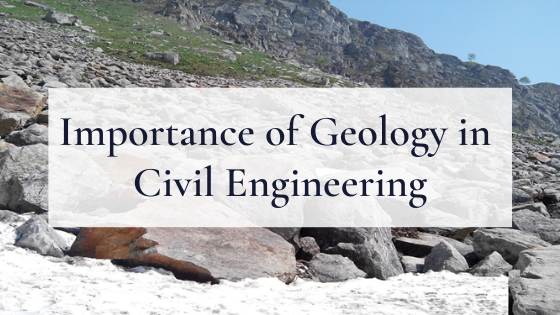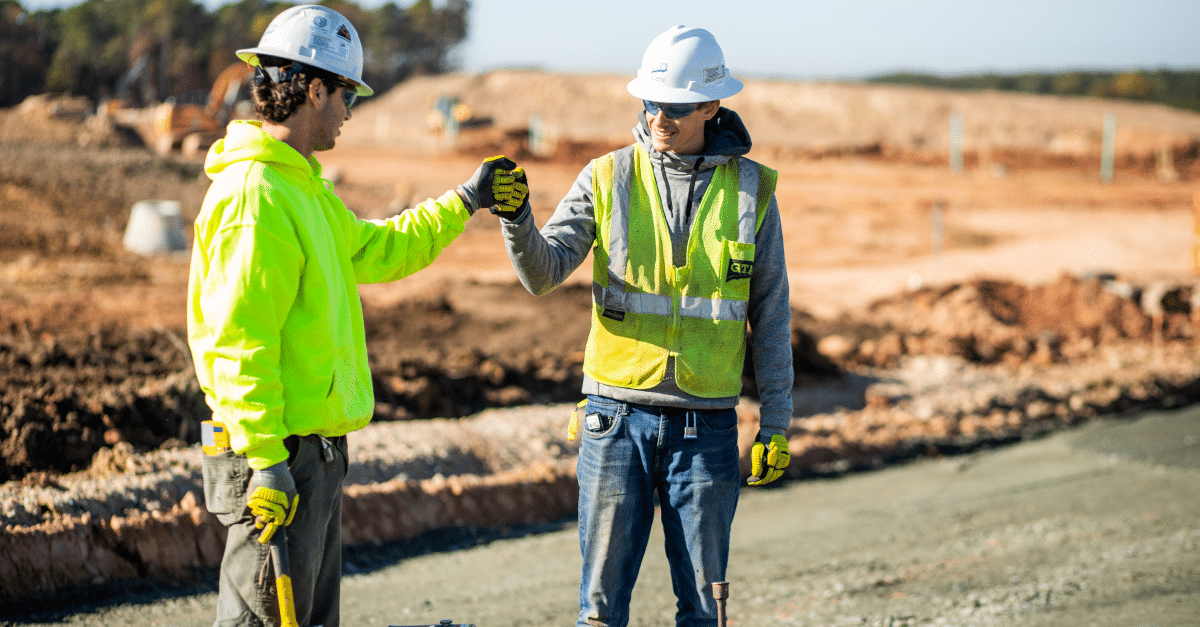Some Known Questions About Geotechnical Engineering For Construction Projects.
Geotechnical Engineering For Construction Projects Fundamentals Explained
Table of ContentsGeotechnical Engineering For Construction Projects Things To Know Before You Get ThisGetting My Geotechnical Engineering For Construction Projects To WorkGeotechnical Engineering For Construction Projects Things To Know Before You Get ThisThe Main Principles Of Geotechnical Engineering For Construction Projects Get This Report about Geotechnical Engineering For Construction Projects
During the investigation, it is crucial to drill at the called for deepness and the needed number of holes as per the recommendation of the Canadian Structure Layout requirement. Sometimes, the proprietor may save some Geotechnical Investigation cost however end up spending even more than the expected during the building price.The responsibilities of the geotechnical expert involve providing material testing for construction support. Geotechnical Engineering for Construction Projects. Geotechnical engineers evaluate all the field test records to make sure that building is going on based on the job spec. Throughout building and construction, a confirmatory examination for dirt compaction is done on-site to guarantee that no future negotiation takes place
After the concrete is put -7 days and 28 days- tests are performed on concrete samples accumulated from the site to make certain that the concrete poured fulfills the design criterion. Asphalt core is taken after the Asphalt is laid and compacted to confirm that it satisfies the style criterion. All laboratory test reports are evaluated by the Geotechnical Designer to make certain that it satisfies the job spec.
What Does Geotechnical Engineering For Construction Projects Do?

Geotechnical design plays a crucial duty in ensuring the security of building and construction projects. Geotechnical design is an essential branch of civil design that focuses on recognizing the practices of earth materials, such as soil and rock.

For a trusted structure and a smooth building process, depend on to provide the competence you require. Contact to obtain professional recommendations and geotechnical solutions tailored to your next task.
Little Known Facts About Geotechnical Engineering For Construction Projects.
When starting a land growth project, recognizing the ground under your feet is as essential as the frameworks you plan to construct above it. Our Geotechnical Design group analyse the ground, ensuring it appropriates for the proposed growth while offering you with the details required to satisfy your task goals.
Geotechnical Design checks out the development of the ground, as it is the building blocks for all tasks. Where frameworks need to be created with regard to the ground problems; ground problems (e.g., soft ground) might require enhancing depending on the dimension of the desired structure. Prior to structure, you need to understand concerning the groundwater, dirt framework, and liquefaction probability of your land.
For sites that are not connected on the neighborhood authority infrastructure added site investigations would certainly be needed to offer technical inputs for on-site stormwater and wastewater. We have actually experienced Geotechnical Designers based in each workplace, sustaining your geotechnical needs nationwide. Get to out to us to discuss exactly how we can sustain your following job.
These records are tailored to meet the specific needs of a project and consist of design specifications and advice for the building and construction of a series of man-made frameworks. As giving working as a consultant solutions covering locations such as incline security and load-bearing capabilities for various materials, these designers carry out research and advancement activities to improve methodologies, devices, products knowledge and analysis covering entire lifecycles.
What Does Geotechnical Engineering For Construction Projects Mean?

Prices of pay typically enhance as your expertise and skills expand, with standards directing to a graduate beginning salary of between 18,000 and 28,000 per year in the UK. This rises to 26,000 to 36,000 with a few years of experience and after that reaching 40,000 to 60,000+ for senior, chartered or master engineers.
With the right application it is feasible to understand the profession and gain access to a difficult yet rewarding and crucial occupation. A geologist would certainly need to retrain to end up being a geotechnical designer, although there is plenty of cross-over between both occupations, which could make this much easier - Geotechnical Engineering for Construction Projects. Geologists require to have an understanding of dirts, rocks and other materials from a clinical viewpoint, while geotechnical engineers story their knowledge of issues such as dirt and rock auto mechanic, geophysics and hydrology and use them to engineering and environmental jobs
When starting, these engineers will certainly have a tendency to work with much less complex jobs, accumulating knowledge and experience all set for even more difficult work later on. Geotechnical designers have a tendency to specialise in certain locations as they grow in experience, concentrating on particular infrastructures such as railways, roads or water. These designers additionally deal with eco-friendly power, offshore and onshore oil and gas, nuclear power, and more.
7 Simple Techniques For Geotechnical Engineering For Construction Projects
The time taken to end up being a geotechnical engineer depends on where you are based, where you research study and check my reference what level of education and learning you want to achieve prior to going into the workplace. Generally-speaking it takes 3-4 years to get to the standard requirements to begin a profession as a geotechnical designer.
These procedures make it possible for experts to evaluate a host of dirt technicians consisting of weight, porosity, void-to-solid bit ratio, permeability, compressibility, maximum shear toughness, birthing capability and contortions. If the structure calls for a deep foundation, designers will certainly use a cone penetration examination to approximate the quantity of skin and end bearing resistance in the subsurface.
When assessing a slope's balance of shear stress and shear stamina, or its capability to hold up against and go through movement, rotational slides and translational slides are commonly taken into consideration. Rotational slides stop working along a bent surface, with translational slides taking place on a planar surface. A professional's objective is to figure out the conditions at which a slope failing could happen.
Often, findings recommend that a site's soil need to be treated to boost its shear strength, tightness and permeability prior to style and construction. When it comes time to set out structure plans, experts are progressively concentrated on sustainability, more especially just dig this how to reduce a structure's carbon impact. One tactic has been to change 20 percent of a structure's cement with fly ash, a waste product from coal fire nuclear power plant.